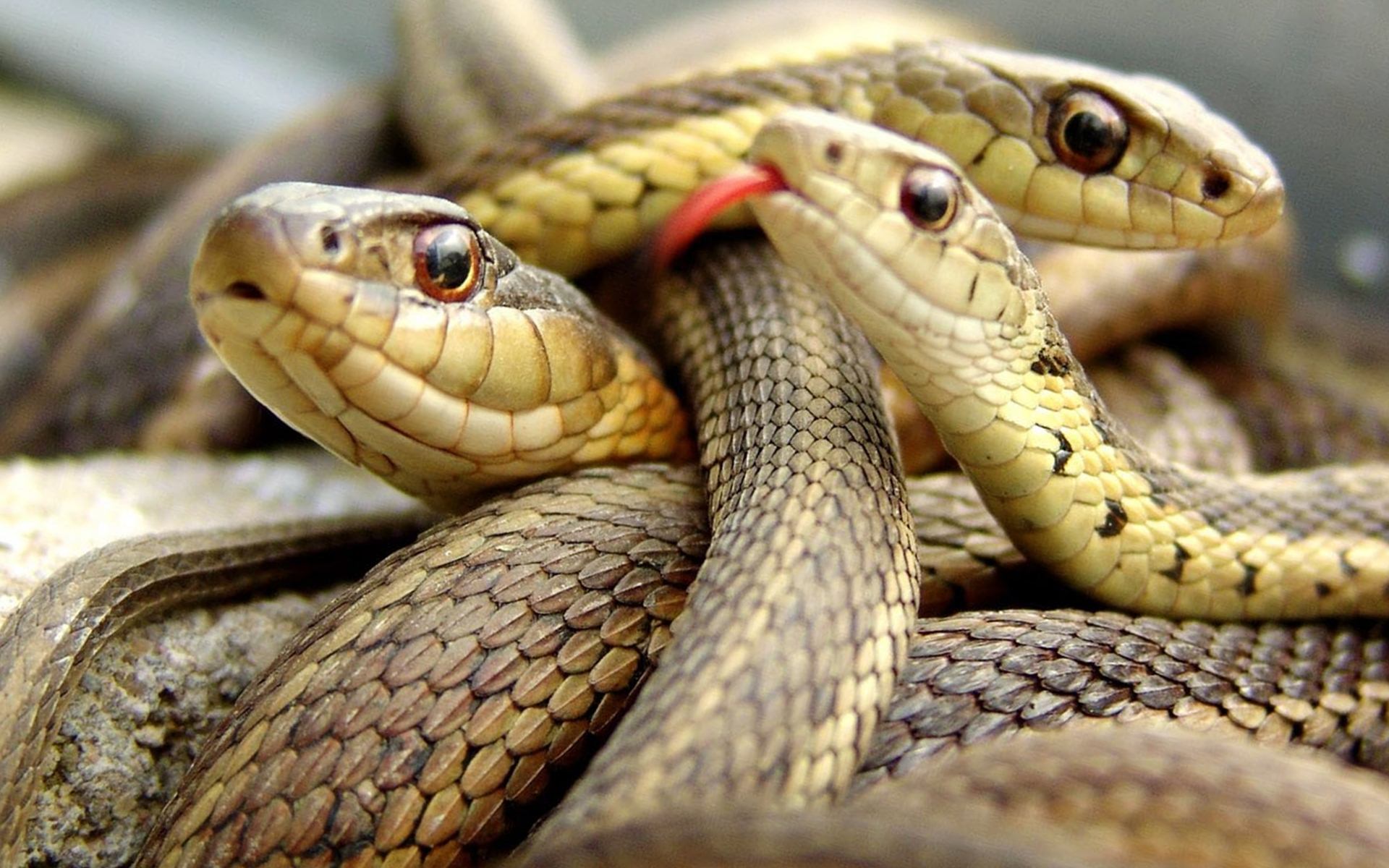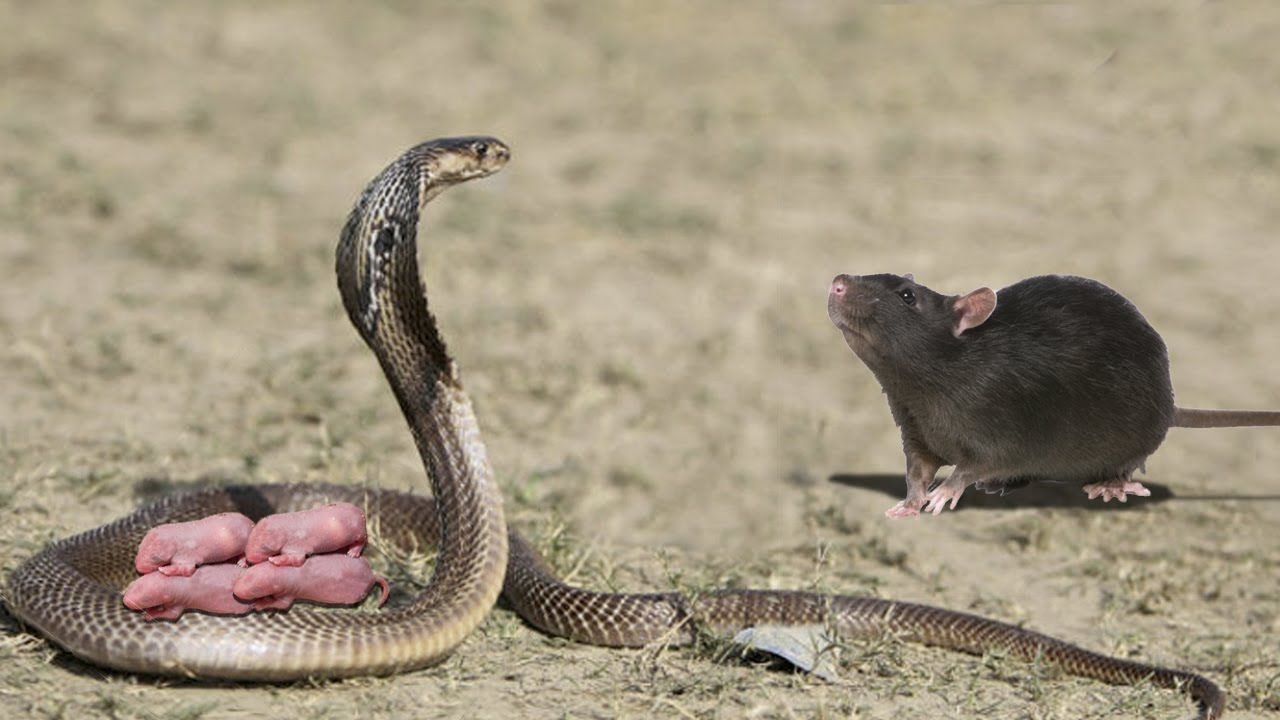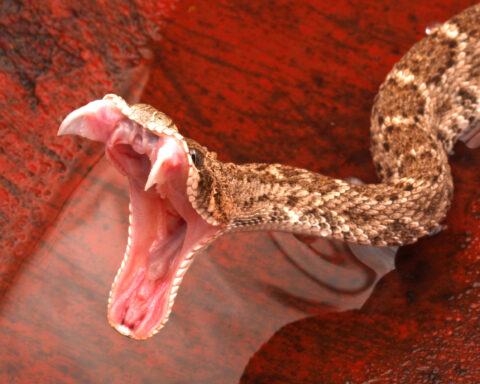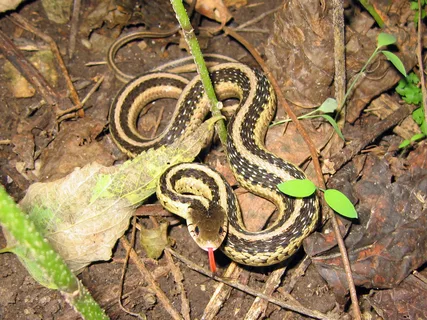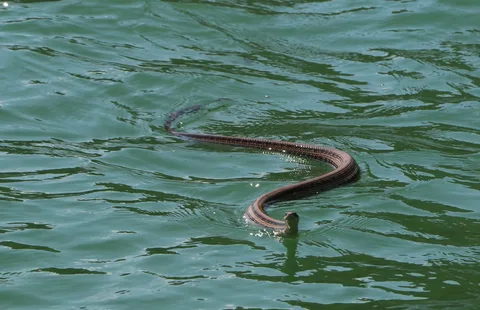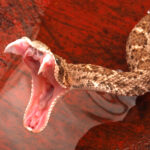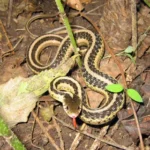Physical Characteristics
Scales and Skin
Scales are a unique characteristic of snakes, playing a vital role in their survival and functionality. These hardened, keratin-based structures cover the skin of ophidian species, providing protection against environmental factors such as dryness, cold, and physical abrasion.
The primary function of scales is to reduce water loss from the body by minimizing contact with the environment. In arid or desert environments where water scarcity is a significant challenge for reptiles, well-developed scutes can be crucial in maintaining moisture balance within an individual snake.
Notably, different species exhibit unique scale patterns and arrangements that may serve various purposes beyond protection. Some snakes develop specific markings to facilitate communication with conspecifics or potential predators. These visual cues can convey essential information about the individual’s reproductive status, dominance hierarchy, or warning signals indicating toxicity or distastefulness.
The skin of a snake is not just covered by scales but also houses other specialized features like sensory pits and glands. The sensory pits, particularly common in pit vipers, are temperature-sensitive organs used to detect heat signatures emanating from potential prey items, thereby enhancing hunting success.
Snakes use their scaly skin in conjunction with the rest of their anatomy, such as their powerful muscles and specialized skulls, to accomplish unique behaviors like constriction and ingestion. Some species can consume large prey whole or partially consume their victims before regurgitating them later due to constraints imposed by their small jaw gape or digestive tract.
The intricate mechanisms behind snake skin allow these reptiles to thrive in diverse environments ranging from the driest deserts to the moistest rainforests. Their ability to adapt and survive is a testament to the remarkable versatility of the snake’s skin, underscoring its fundamental role as a protective barrier and sensory tool.
Understanding the multifaceted nature of scales and snake skin underscores the importance of preserving ecosystems where these species live. Maintaining biodiversity through conservation efforts can safeguard not only individual snake populations but also the complex interactions and adaptations within their environments.
In conclusion, the scale-covered skin of snakes represents a remarkable combination of protection and functionality, allowing them to navigate and thrive in an array of ecological niches. This unique adaptation highlights both the resilience of these reptiles and the importance of preserving their habitats for future generations.
Snakes have scaly skin, which helps to reduce friction and aid in movement through dense vegetation.
Scales are a unique characteristic of snakes that provide them with several advantages in their natural environment. The scales are made up of keratin, the same protein that makes up human hair and nails, and they help to reduce friction between the snake’s body and its surroundings.
As snak s move through dense vegetation, such as grasses or bushes, their scales help to prevent them from getting stuck. This is because the scales have microscopic ridges that interlock with each other, creating a smooth surface that allows the snake to glide effortlessly through the underbrush.
The friction-reducing properties of scales also make it easier for snakes to climb and navigate steep surfaces. For example, some species of snakes are able to climb vertical walls or even upside down on ceilings with ease, thanks to their specialized scales that provide excellent grip and traction.
In addition to reducing friction, the scales of snakes also play a crucial role in helping them to regulate their body temperature. Some species of snakes are able to bask in the sun on a rock or branch to warm up, while others can retreat to a cooler location to cool down.
The scales also help to protect snakes from dehydration, which is essential for these animals since they do not have external ears or eyelids. The scales create a barrier that helps to prevent water loss through the skin, allowing the snake to conserve moisture and maintain its bodily functions.
Lastly, it’s worth noting that different species of snakes have distinct scle characteristics, such as color patterns, texture, and size. These variations serve specific purposes, such as camouflage, mating signals, or territorial markers, highlighting the incredible diversity and adaptability of these fascinating creatures.
In summary, the scales on snakes provide numerous benefits that enable them to thrive in their environments, making them an essential aspect of a snake’s anatomy and behavior.
Bodies and Limbs
Snakes are limbless reptiles that belong to the suborder Serpentes. They have a unique body structure that allows them to move and navigate through their environment with great flexibility.
The bodies of snakes are typically long and slender, with some species having lengths exceeding 30 feet (9 meters). They have no limbs or external ears, but they do have eyes, nostrils, and a mouth. The skin of a snake is usually smooth and scales-covered, which helps to reduce friction as they move through their surroundings.
Snakes are able to move by using a process called slithering. This involves contracting and relaxing their muscles to create waves that travel along the length of their bodies, allowing them to propel themselves forward. Some snakes also use a type of motion called sidewinding, where they lift one side of their body off the ground and use it as a pivot point to move in a zigzag pattern.
Despite having no limbs, snakes are able to climb and perch on objects by using specialized scales on their bellies that can grip onto surfaces. Some species of snakes are also skilled at navigating through complex environments, such as dense vegetation or rocky terrain.
Snakes have a highly developed sense of touch, which helps them navigate their surroundings and locate potential prey. They use special organs called Jacobson’s organs to detect chemical cues in the air, allowing them to track their prey even when they cannot see it.
In addition to their physical abilities, snakes also have a range of interesting behaviors. Some species are known to be solitary animals, while others live in small groups or family units. Some snakes are also skilled hunters, using techniques such as ambushing or chasing down their prey.
Their bodies are slender, elongated, and limbless, allowing for increased flexibility and maneuverability.
The unique physiology of snakes is a key factor in their ability to thrive in a wide range of environments. Their bodies are slender, elongated, and limbless, allowing for increased flexibility and maneuverability.
This distinctive body shape enables snakes to navigate through dense vegetation, climb trees, and squeeze through narrow crevices with ease. The absence of limbs reduces wind resistance, making it possible for snakes to move quickly and quietly through their surroundings.
The flexible nature of snake bodies also allows them to fit into tight spaces and pursue prey into enclosed areas. Their ability to compress their body and extend it as needed is a testament to the remarkable adaptability of these animals.
In addition to their physical advantages, snakes’ slender builds also enable them to regulate their body temperature more efficiently than many other animals. By exposing their bodies to the sun or sheltering in cooler areas, snakes can maintain an optimal body temperature for hunting and digestion.
The following are some of the key features that contribute to the flexible and maneuverable nature of snake bodies:
- Slender shape: The elongated body shape of snakes allows them to move through tight spaces with ease.
- Limbless design: The absence of limbs reduces wind resistance and enables snakes to navigate complex terrain.
- Flexible joints: Snakes’ joints allow for a wide range of motion, making it possible for them to twist and turn through dense vegetation.
- Skinned bodies: The smooth skin of snakes helps to reduce friction and enables them to move quickly and quietly through their surroundings.
Overall, the unique combination of physical features in snake bodies allows them to thrive in a wide range of environments and has contributed to their success as a species.
Diet and Hunting
Prey Selection
Prey selection refers to the process by which snakes choose their prey items. This is a critical component of snake biology as it affects their foraging behavior, nutritional intake, and overall success as predators.
Serpents have evolved unique adaptations that enable them to select optimal prey species based on various factors such as size, coloration, movement patterns, temperature, humidity, and even the presence of other snakes or potential competitors.
The first stage of prey selection typically involves visual detection by the snake. They possess highly sensitive pit organs, specialized eyes, and a keen sense of smell that helps them locate hidden prey items or track the movements of potential meals.
Once detected, snakes evaluate their prospective meal based on various criteria such as size, age, sex, condition (e.g., fresh kill versus carrion), and nutritional value. They often prefer larger or more nutritious prey to maximize energy intake while minimizing hunting effort and risk.
Certain snake species are specialized predators that target specific prey groups, such as rodents (venomous snakes like the eastern coral snake) or birds (cobras, king snakes). Conversely, some non-venomous snakes may exhibit a generalist approach to foraging, eating whatever is most readily available.
It’s worth noting that snake prey selection can be influenced by environmental factors such as seasonal availability of prey populations, competition with other predators or scavengers, and even the presence of human activities like agriculture or urbanization. This means that prey selection can change over time in response to shifting ecosystem conditions.
In addition to these external influences, individual snakes may exhibit learning or memory-based foraging strategies where they adjust their prey choices based on past experiences with success rates and potential risks associated with specific food sources.
Snakes primarily feed on small animals such as rodents, birds, and lizards.
The dietary habits of snakes are diverse and varied, with different species exhibiting preferences for specific prey items. In general, however, many snakes primarily feed on small animals such as rodents, birds, and lizards. These prey items provide a rich source of nutrients and energy for the snake.
Some common examples of small animals that snakes prey upon include:
- Rodents: Mice, rats, and squirrels are all common prey items for many snake species. These rodents are abundant in most ecosystems and provide a reliable source of food for snakes.
- Birds: Many snakes feed on birds, including nestlings, fledglings, and adult birds. Some species of snakes specialize in feeding on birds, such as the king snake, which is known to feed extensively on bird eggs and young.
- Lizards: Lizards are another common prey item for many snake species. These reptiles are often active during the day, making them more vulnerable to snake predation.
In addition to these small animals, some larger snakes also feed on larger prey items, such as:
- Deer: Some large species of snakes, such as the bird-eating cobra, feed on deer and other ungulates.
- Cattle: In some parts of Africa, certain snake species are known to feed on cattleand other livestock.
It’s worth noting that the feeding habits of snakes can vary depending on factors such as geographic location, seasonality, and availability of prey items. Overall, however, many snakes primarily feed on small animals such as rodents, birds, and lizards, which provide them with a reliable source of nutrients and energy.
Hunting Strategies
To effectively hunt snakes, it’s crucial to have a clear understanding of their behavior, habitats, and body language. This knowledge will help you anticipate where they might be hiding and how to approach them safely.
Here are some essential hunting strategies for snakes:
Habitat Analysis
Identify areas where snakes are likely to congregate, such as near water sources, rocky outcrops, or abandoned burrows.
Look for signs of snake activity, including shed skins, scat, and tracks.
Timing and Scheduling
Plan your hunt during the hottest part of the day when snakes are most active.
Avoid hunting during periods of extreme weather, such as heavy rain or intense heatwaves.
Visual Detection
Use binoculars to scan areas from a distance, looking for movement and patterns that may indicate snake presence.
Move slowly and deliberately through the terrain, keeping your eyes scanning the ground for any sign of snakes.
Tracking and Following
Learn how to identify snake tracks and follow them to locate the snake’s hiding spot.
Be prepared to stalk and track the snake over long distances, as they can be unpredictable and mobile creatures.
Approach and Capture Techniques
Use a calm and measured approach when getting close to the snake, speaking in a soothing voice and moving slowly to avoid startling it.
1Employ capture techniques such as netting, snaring, or using specialized equipment designed for catching snakes safely.
Post-Capture Procedures
Handle the snake carefully and humanely, taking note of its species, size, sex, and any other relevant characteristics.
Release the snake back into its natural habitat after capture, if permitted by local regulations.
Remember to exercise caution and follow local guidelines when hunting snakes, as some species may be protected or require special permits for handling.
They employ a variety of tactics to capture their prey, including ambush, stalking, and constricting.
Snakes are skilled predators that have evolved unique strategies to capture their prey. One of the primary methods they employ is ambush. By lying in wait, often hidden from view, snakes can strike unsuspecting victims with lightning-fast speed and precision. This tactic allows them to conserve energy while minimizing the risk of injury or escape for their prey.
Stalking is another common approach used by snakes. Some species of snakes are skilled hunters that follow their prey over long distances, studying its movements and behavior before striking. This method requires a high level of patience and attention to detail, but it can be highly effective in securing a meal. For example, some snake species, like the African rock python, will stalk large antelopes for hours or even days before making a kill.
Constricting is also an important tactic used by snakes to capture their prey. This involves wrapping the snake’s body around the prey and squeezing it until the prey suffocates or dies from circulatory failure. Constricting allows snakes to subdue large, powerful prey that would be difficult to catch through other means. For example, some species of pythons are able to constrict deer and wild boars, which would be formidable opponents if they were to attack a snake head-on.
Snakes have also evolved various physical adaptations that enhance their hunting abilities. For example, many snakes have heat-sensing pits that allow them to detect the body temperature of warm-blooded prey even in complete darkness. Other species have specialized scales or skin patterns that help them blend in with their surroundings, making it easier for them to ambush unsuspecting victims.
It’s worth noting that different snake species use these tactics in unique ways and combinations. For example, some snakes may rely more heavily on stealth and patience, while others may employ brute force and power to catch their prey. Overall, the ability of snakes to capture their prey using a variety of tactics has allowed them to thrive in many different environments around the world.
Behavior and Social Structure
Solitary Animals
The term Solitary Animals is often used to describe species that are typically found alone, rather than in groups or herds. Snakes, however, are a unique case within the category of solitary animals.
Unlike many other species, snakes do not have a strong social structure and are generally not seen in close-knit family groups or large aggregations like some mammals, birds, or even fish.
This can be attributed to several factors including their body plan, reptilian
behavior, and ecological pressures. Snakes are primarily predators that rely on stealth, agility, and individual hunting prowess rather than cooperative hunting strategies.
The vast majority of snake species are not known to form long-lasting pair bonds or engage in communal activities like foraging, nesting, or parental care. Even the female’s reproductive cycle is often solitary, with many snakes giving birth to live young without any direct assistance from males or other snakes.
When encountering potential mates or rival snakes during mating seasons, some species do exhibit complex courtship behaviors and territorial displays; however these interactions are brief and usually occur within a specific context.
Furthermore, the solitary lifestyle of most snakes is partly influenced by their heterothermic (cold-blooded) metabolism. Unlike endotherms (warm-blooded animals), which maintain a relatively constant body temperature through metabolic processes, ectotherms like snakes are sensitive to ambient temperatures and tend to seek shelter or adjust their activity patterns according to environmental conditions.
The combination of these factors contributes to the general pattern of snake behavior being characterized as solitary, even though some species may occasionally be observed near each other in certain situations.
Most snake species are solitary, only coming together for mating or during the hibernation period.
Most snake species are indeed solitary animals, with individuals only coming together under specific circumstances. This unique behavior is a result of their evolution over millions of years, which has led to the development of various social structures and habits.
The primary reason for this solitariness is related to resource competition and territorialism. Snakes require a specific environment to hunt, bask, and breed successfully, and many species have established territories to ensure they can access these resources without interference from other snakes. This territorial behavior is particularly pronounced in larger species, such as pythons and boas.
However, there are some instances where multiple snakes do come together. During the mating season, individuals often congregate to find suitable mates, leading to temporary gatherings of several snakes. These aggregations typically occur during specific times of the year when temperatures are conducive for reproduction or egg-laying. Female snakes often lay their eggs in communal burrows or nesting sites, but after hatching, the young snakes disperse to claim their own territory.
Another circumstance under which snakes come together is during hibernation. As winter approaches and food becomes scarce, many species of snakes will seek sheltered areas with suitable temperatures, humidity levels, and protection from predators. These communal dens can house dozens or even hundreds of snakes, all sharing the same limited space until warmer temperatures arrive in spring.
Some examples of snake species that exhibit these social behaviors include garter snakes (Thamnophis sirtalis), which gather by the thousands to mate and migrate; rattlesnakes (Crotalus spp.), which often share communal dens with other snakes during hibernation; and various species of vipers (Vipera spp.) that have been observed grouping together in burrows or rocky crevices.
It is essential to note, however, that even within these social contexts, individual snakes still maintain significant autonomy. Each snake has its own territory and often engages in territorial behavior, such as posturing or scent marking, to establish dominance over others in the area.
Ultimately, the complex social dynamics of snakes are influenced by a combination of environmental, biological, and ecological factors, resulting in a rich tapestry of behaviors and adaptations that continue to fascinate researchers and enthusiasts alike.
Territorial Marking
Territorial marking is a behavior exhibited by some species of snakes, where they leave chemical signals behind to mark their territory and warn off other snakes.
The process of territorial marking typically involves the snake rubbing its head or body against objects in its environment, such as rocks, trees, or even the ground itself.
During this process, the snake deposits pheromones – a type of chemical signal – from special glands located near its eyes, nasal pits, or cloaca (depending on the species).
The pheromones deposited by the snake serve as a visual and olfactory cue to other snakes, warning them that this territory is already occupied.
This behavior is particularly common among reptiles, including some species of boas, pythons, and colubrids, but it’s not exclusive to these groups – even some species of garter snakes have been known to exhibit this behavior.
The purpose of territorial marking is multifaceted: it allows snakes to maintain control over their territory by warning off potential competitors, helps them navigate and recognize familiar areas, and may also play a role in mate selection or courtship behaviors.
In some cases, territorial marking can be an indicator of stress or anxiety in snakes, as they may engage in this behavior excessively if they feel threatened or displaced from their usual habitat.
Observing and understanding the patterns and contexts surrounding territorial marking in snakes can provide valuable insights into their social and spatial behaviors, ultimately enriching our knowledge of these fascinating creatures.
Snakes use scent markings to define their territory and warning other snakes of potential threats.
Snakes have evolved various mechanisms to communicate and convey information about their identity, status, and intentions to conspecifics and potential predators. One such mechanism is the use of scent markings to define their territory and warn other snakes of potential threats. Scent marking involves the deposition of chemical cues, known as pheromones, on a substrate or in the environment that can be detected by snakes through olfaction.
The process of scent marking in snakes is often associated with territorial behavior, where individuals use pheromone signals to advertise their presence and deter rivals from encroaching on their territory. Snakes have scent glands located near their vent or cloaca, which secrete a mixture of chemical compounds that can be deposited on the substrate through rubbing or other forms of contact.
These chemical cues serve as visual analogues in the form of “scent trails” that snakes follow to locate mates, detect intruders, and recognize potential threats. Snakes are able to distinguish between individual scent profiles, which can provide information about the identity, sex, reproductive status, and dominance hierarchy of a particular snake.
Furthermore, scent markings in snakes have also been linked to agonistic behavior, such as territorial defense and aggression. When a snake perceives a conspecific or potential predator that has invaded its territory, it may deposit pheromone signals on the substrate or engage in display behaviors that advertise its size, coloration, and posturing.
In some species of snakes, scent markings are used to convey specific messages about reproductive status, such as during courtship or mating. For example, males may exhibit increased aggression and dominance displays while depositing pheromones on the substrate that signal their reproductive readiness to females.
The importance of scent markings in snakes extends beyond territorial behavior and agonistic interactions. These chemical cues can also play a role in mate choice, with individuals preferring mates that have deposited specific pheromone signals on the substrate or during courtship displays.
Interestingly, research has shown that certain species of snakes are capable of recognizing individual scent profiles over time, even when the snake’s own scent profile changes due to factors such as growth or reproduction. This capacity for long-term memory and recognition highlights the complex nature of snake communication systems and the importance of pheromone signals in conveying information about an individual snake’s identity and status.
Reproduction and Development
Egg-Laying
Egg-laying snakes, also known as oviparous snakes, are species of snakes that lay eggs instead of giving birth to live young. This reproductive strategy is unique among snakes and is shared with a few other reptiles like lizards and turtles.
Oviparous snakes have been around for millions of years, with fossil evidence showing that they existed as far back as the Cretaceous period. Despite their ancient history, there are still many fascinating things to learn about these creatures.
One interesting fact about egg-laying snakes is that they often exhibit behaviors similar to those of mammals. For example, some species have been observed gathering leaves or other materials and using them to build a nest before laying eggs.
Oviparous snakes can be found in various habitats around the world, from tropical forests to deserts and grasslands. They are an integral part of their ecosystems and play important roles as both predators and prey.
Many species of egg-laying snakes have evolved unique characteristics that allow them to thrive in specific environments. For example, some desert-dwelling species have developed the ability to survive for extended periods without water by metabolizing fat reserves.
The reproductive biology of oviparous snakes is also complex and varies from one species to another. Some species lay a large number of eggs at once, while others may only lay one or two per year. The size of the eggs can also vary greatly, with some species laying eggs as small as 1 inch in length.
Despite their fascinating biology and unique characteristics, many species of egg-laying snakes are threatened by habitat loss and other human activities. Conservation efforts are necessary to protect these incredible creatures and preserve their ecosystems for future generations.
Ongoing research into the behavior, ecology, and evolution of oviparous snakes continues to shed new light on the biology and diversity of this group. As scientists learn more about these fascinating animals, our appreciation for the complexity and richness of life on Earth grows.
Many snake species lay eggs, which incubate outside the mother’s body.
Many snake species belong to the suborder Squamata and are oviparous, meaning they lay eggs that develop and hatch outside their mother’s body. This reproductive strategy is called oviparity. In contrast, some snakes give birth to live young, a process known as viviparity, although this is less common in the order Ophidia.
The eggs of oviparous snakes are typically leathery and hard-shelled, providing protection against the elements and potential predators. The female snake will often lay her eggs in a safe location, such as a burrow or a hidden chamber, to ensure their survival until they hatch. Some species of snakes will even brood
their eggs by coiling themselves around them, maintaining a constant temperature and humidity level.
The incubation period for snake eggs can vary greatly depending on the species and environmental factors. In general, it takes several weeks to a few months for the embryos to develop fully before hatching. During this time, the eggs are sensitive to temperature and humidity fluctuations, which can impact the hatchlings’ chances of survival.
Some interesting examples of oviparous snakes include the cane toad-eating snake, Pseudonaja nuchalis, found in Australia, and the banded water snake, Nerodia fasciata, native to North America. These species are just a few examples of the many snakes that have adapted oviparity as their reproductive strategy.
Hibernation
Hibernation is a unique survival strategy employed by certain species of snakes, particularly in colder climates. These snakes are not true hibernators, but rather brumate, which means they experience a period of dormancy during the winter months.
Some species of snakes that exhibit hibernation-like behavior include the eastern garter snake (Thamnophis sirtalis), the milk snake (Lampropeltis triangulum), and the common garter snake (Thamnophis radix). These snakes typically hibernate in groups, often with other species, in underground burrows or rocky crevices.
As winter approaches, these snakes will seek out a suitable location to brumate, often choosing a spot that is protected from the elements and provides a stable temperature. They may gather in large numbers, sometimes forming dense aggregations, before settling into a state of dormancy.
During this period of dormancy, the snake’s metabolism slows significantly, and its body undergoes various physiological changes to conserve energy. The heart rate decreases dramatically, from around 200 beats per minute during active periods to just a few beats per minute while hibernating. The snake’s breathing rate also slows, and it may only breathe a few times per hour.
The exact duration of hibernation varies depending on the species and environmental conditions. For example, some species of snakes in North America typically hibernate from October to March or April, while others may only experience short periods of dormancy during particularly harsh winters.
It’s worth noting that not all species of snakes exhibit hibernation-like behavior. Some species, such as the sidewinder (Crotalus cerastes), are able to survive cold temperatures without entering a state of dormancy. These snakes will often seek shelter in burrows or rocky crevices during periods of extreme cold, but they do not experience the same level of physiological changes as true hibernators.
In conclusion, while not all species of snakes hibernate, those that do employ this unique survival strategy to conserve energy and survive the cold temperatures of winter. By understanding more about the biology and behavior of these fascinating creatures, we can gain a deeper appreciation for their ability to adapt and thrive in a variety of environments.
Some interesting facts about Hibernation Snakes include:
- The eastern garter snake is one of the most common species of hibernating snakes in North America, with populations found throughout the northeastern United States and southeastern Canada.
- Hibernating snakes can live for extended periods without food or water, sometimes up to several months. This is possible due to their ability to conserve energy by slowing down their metabolism.
- The milk snake, a species of hibernating snake found in North America, can grow up to 40 inches (100 cm) in length and weigh up to 2 pounds (1 kg).
- Hibernation is a crucial survival strategy for snakes in colder climates, allowing them to conserve energy and avoid the dangers associated with active hunting during periods of food scarcity.
Some species hibernate during winter months, often sharing a den with multiple individuals.
Many animal species exhibit behaviors that enable them to conserve energy and survive the harsh conditions of winter. One such behavior is hibernation, where certain animals will slow down their metabolism and enter a state of dormancy during the colder months. Some species are more social than others and will often share a den with multiple individuals in order to maintain body heat and safety.
These communal dens can be found in various environments, from burrows under the ground to hollowed-out logs or rocky outcroppings. The specific location of the den is often chosen for its ability to provide protection from extreme temperatures, predators, and other environmental stressors. In some cases, these communal dens may have been used by previous generations of the same species, providing a sense of familiarity and security for the current residents.
Snakes, for example, are not true hibernators in the classical sense but will often brumate during the winter months. This state of dormancy is characterized by a significant decrease in metabolic activity and allows the snake to conserve energy until more favorable conditions return. During this time, snakes will often coil together in large numbers, forming a dense ball that helps to retain body heat.
Other species, such as bears, true hibernators in the sense that their bodily functions slow down dramatically during winter months. These animals will experience a significant decrease in heart rate, breathing rate, and body temperature, allowing them to conserve energy while still maintaining some level of consciousness.
The benefits of communal denning for these species are numerous. For one, it allows them to pool their collective body heat, keeping themselves warm during the cold winter months. This can be especially important for smaller or more vulnerable individuals that may struggle to maintain a stable body temperature on their own.
Furthermore, communal denning provides an added layer of protection against predators and harsh environmental conditions. When animals are grouped together in a shared den, it becomes much more difficult for potential threats to target them individually.
The social dynamics of these communal dens can also be quite fascinating. In some species, individuals will form close bonds with each other, often based on factors such as age, size, or experience. These relationships can play an important role in maintaining the stability and cohesion of the group during times of stress or hardship.
In conclusion, hibernation is a vital survival strategy employed by many animal species to conserve energy and withstand the harsh conditions of winter. By sharing communal dens with multiple individuals, these animals are able to maintain body heat, safety, and social bonds that ultimately contribute to their overall well-being during this challenging time.
- Countries That Start With The Letter F - September 2, 2024
- Biggest Cities In Vietnam - September 1, 2024
- 10 Largest Cities In Kansas - September 1, 2024

